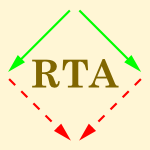62 papers:
 SIGMOD-2015-WangZZLC #effectiveness #nearest neighbour
SIGMOD-2015-WangZZLC #effectiveness #nearest neighbour- Optimal Spatial Dominance: An Effective Search of Nearest Neighbor Candidates (XW, YZ, WZ, XL, MAC), pp. 923–938.
 VLDB-2014-Song0C #on the #set
VLDB-2014-Song0C #on the #set- On Concise Set of Relative Candidate Keys (SS, LC, HC), pp. 1179–1190.
 MSR-2014-MondalRS #co-evolution #predict #ranking
MSR-2014-MondalRS #co-evolution #predict #ranking- Prediction and ranking of co-change candidates for clones (MM, CKR, KAS), pp. 32–41.
 ICPR-2014-BuoncompagniFM #recognition #sketching
ICPR-2014-BuoncompagniFM #recognition #sketching- Shape Features for Candidate Photo Selection in Sketch Recognition (SB, AF, DM), pp. 1728–1733.
 DATE-2013-Pomeranz #equivalence #fault #graph #on the #set
DATE-2013-Pomeranz #equivalence #fault #graph #on the #set- On candidate fault sets for fault diagnosis and dominance graphs of equivalence classes (IP), pp. 1083–1088.
 ICDAR-2013-LvHWL #online #realtime #recognition #segmentation
ICDAR-2013-LvHWL #online #realtime #recognition #segmentation- Learning-Based Candidate Segmentation Scoring for Real-Time Recognition of Online Overlaid Chinese Handwriting (YFL, LLH, DHW, CLL), pp. 74–78.
 ICDAR-2013-ZhangZL #documentation #keyword #online
ICDAR-2013-ZhangZL #documentation #keyword #online- Keyword Spotting in Online Chinese Handwritten Documents with Candidate Scoring Based on Semi-CRF Model (HZ, XDZ, CLL), pp. 567–571.
 SIGIR-2013-AsadiL #architecture #effectiveness #generative #multi #performance #retrieval #trade-off
SIGIR-2013-AsadiL #architecture #effectiveness #generative #multi #performance #retrieval #trade-off- Effectiveness/efficiency tradeoffs for candidate generation in multi-stage retrieval architectures (NA, JL), pp. 997–1000.
 SIGIR-2013-DimopoulosNS #performance #query
SIGIR-2013-DimopoulosNS #performance #query- A candidate filtering mechanism for fast top-k query processing on modern cpus (CD, SN, TS), pp. 723–732.
 SAT-2013-DellertZK #interactive #named
SAT-2013-DellertZK #interactive #named- MUStICCa: MUS Extraction with Interactive Choice of Candidates (JD, CZ, MK), pp. 408–414.
 CIKM-2012-AsadiL #documentation #generative #performance #ranking
CIKM-2012-AsadiL #documentation #generative #performance #ranking- Fast candidate generation for two-phase document ranking: postings list intersection with bloom filters (NA, JL), pp. 2419–2422.
 CIKM-2012-DybalaRAS #analysis #comparative #generative #ranking
CIKM-2012-DybalaRAS #analysis #comparative #generative #ranking- Data filtering in humor generation: comparative analysis of hit rate and co-occurrence rankings as a method to choose usable pun candidates (PD, RR, KA, KS), pp. 2587–2590.
 CIKM-2012-LiuQ #generative #mining
CIKM-2012-LiuQ #generative #mining- Mining high utility itemsets without candidate generation (ML, JFQ), pp. 55–64.
 ECIR-2012-NawabSC #documentation #query #using
ECIR-2012-NawabSC #documentation #query #using- Retrieving Candidate Plagiarised Documents Using Query Expansion (RMAN, MS, PDC), pp. 207–218.
 SIGIR-2012-AlasiryLP #detection #query
SIGIR-2012-AlasiryLP #detection #query- Detecting candidate named entities in search queries (AA, ML, AP), pp. 1049–1050.
 RE-2012-NiuM #clustering #generative #requirements #revisited
RE-2012-NiuM #clustering #generative #requirements #revisited- Enhancing candidate link generation for requirements tracing: The cluster hypothesis revisited (NN, AM), pp. 81–90.
 RTA-2012-CousineauH #proving #semantics
RTA-2012-CousineauH #proving #semantics- A Semantic Proof that Reducibility Candidates entail Cut Elimination (DC, OH), pp. 133–148.
 DATE-2011-ChenGSS #analysis #performance
DATE-2011-ChenGSS #analysis #performance- Data-oriented performance analysis of SHA-3 candidates on FPGA accelerated computers (ZC, XG, AS, PS), pp. 1650–1655.
 ICDAR-2011-SituLT #image #locality #probability #using #web
ICDAR-2011-SituLT #image #locality #probability #using #web- Text Localization in Web Images Using Probabilistic Candidate Selection Model (LS, RL, CLT), pp. 1359–1363.
 HCI-MIIE-2011-ChenCSL #design #mobile #volunteer
HCI-MIIE-2011-ChenCSL #design #mobile #volunteer- Finding Suitable Candidates: The Design of a Mobile Volunteering Matching System (WCC, YMC, FES, CLL), pp. 21–29.
 CIKM-2011-KalyanpurPBLC #composition #ranking
CIKM-2011-KalyanpurPBLC #composition #ranking- Fact-based question decomposition for candidate answer re-ranking (AK, SP, BB, AL, JCC), pp. 2045–2048.
 KDIR-2011-ShishiboriLK #metric
KDIR-2011-ShishiboriLK #metric- An Improved Method to Select Candidates on Metric Index VP-tree (MS, SSL, KK), pp. 314–319.
 RE-2011-MahmoudN #clustering #named #traceability
RE-2011-MahmoudN #clustering #named #traceability- TraCter: A tool for candidate traceability link clustering (AM, NN), pp. 335–336.
 CIKM-2010-SinghRVCK #named
CIKM-2010-SinghRVCK #named- PROSPECT: a system for screening candidates for recruitment (AS, RC, KV, VC, NK), pp. 659–668.
 KDIR-2010-JedrzejczakW #generative #query #using
KDIR-2010-JedrzejczakW #generative #query #using- Integrated Candidate Generation in Processing Batches of Frequent Itemset Queries using Apriori (PJ, MW), pp. 487–490.
 SIGIR-2010-FangSM #documentation #modelling
SIGIR-2010-FangSM #documentation #modelling- Discriminative models of integrating document evidence and document-candidate associations for expert search (YF, LS, APM), pp. 683–690.
 SAC-2010-AminBFJ #approach #probability
SAC-2010-AminBFJ #approach #probability- A stochastic approach to candidate disease gene subnetwork extraction (MSA, AB, RLFJ, HMJ), pp. 1534–1538.
 ICDAR-2009-SaldarriagaMV #documentation #online #recognition #using
ICDAR-2009-SaldarriagaMV #documentation #online #recognition #using- Using top n Recognition Candidates to Categorize On-line Handwritten Documents (SPS, EM, CVG), pp. 881–885.
 SAC-2009-LinL #generative #mining
SAC-2009-LinL #generative #mining- Optimal candidate generation in spatial co-location mining (ZL, SL), pp. 1441–1445.
 SAT-2009-CreignouDER #comprehension
SAT-2009-CreignouDER #comprehension- (1, 2)-QSAT: A Good Candidate for Understanding Phase Transitions Mechanisms (NC, HD, UE, RR), pp. 363–376.
 TLCA-2009-Riba #on the
TLCA-2009-Riba #on the- On the Values of Reducibility Candidates (CR), pp. 264–278.
 DAC-2008-TamPB #analysis #automation #layout #locality #precise #using
DAC-2008-TamPB #analysis #automation #layout #locality #precise #using- Precise failure localization using automated layout analysis of diagnosis candidates (WCT, OP, RD(B), pp. 367–372.
 EDOC-2008-WehrweinMT #approach #collaboration #implementation
EDOC-2008-WehrweinMT #approach #collaboration #implementation- A Requirements-Driven and Collaborative Decision Support Approach for Evaluating the Viability of Candidate Implementation Technologies (BW, GM, RT), pp. 293–299.
 CIKM-2008-MaYLK #mining #network #process #social #using
CIKM-2008-MaYLK #mining #network #process #social #using- Mining social networks using heat diffusion processes for marketing candidates selection (HM, HY, MRL, IK), pp. 233–242.
 SAC-2008-ZhouTBAG #ambiguity #graph #named #query
SAC-2008-ZhouTBAG #ambiguity #graph #named #query- Gcon: a graph-based technique for resolving ambiguity in query translation candidates (DZ, MT, TJB, HA, JG), pp. 1566–1573.
 DocEng-2007-KohCKG #documentation #pattern matching #pattern recognition #recognition
DocEng-2007-KohCKG #documentation #pattern matching #pattern recognition #recognition- Elimination of junk document surrogate candidates through pattern recognition (EK, DC, AK, RGO), pp. 187–195.
 ICDAR-2007-SchulzMM #performance #precise #set
ICDAR-2007-SchulzMM #performance #precise #set- Fast Selection of Small and Precise Candidate Sets from Dictionaries for Text Correction Tasks (KUS, SM, PM), pp. 471–475.
 FoSSaCS-2007-Riba #on the
FoSSaCS-2007-Riba #on the- On the Stability by Union of Reducibility Candidates (CR), pp. 317–331.
 HCI-AS-2007-BurgerB #predict
HCI-AS-2007-BurgerB #predict- Predicting the Outcome of a Computer Literacy Course Based on a Candidate’s Personal Characteristics (AJB, PJB), pp. 173–182.
 CIKM-2007-WuHK #mining #web
CIKM-2007-WuHK #mining #web- Mining redundancy in candidate-bearing snippets to improve web question answering (YW, XH, HK), pp. 999–1002.
 CIKM-2006-MacdonaldO #adaptation #data fusion
CIKM-2006-MacdonaldO #adaptation #data fusion- Voting for candidates: adapting data fusion techniques for an expert search task (CM, IO), pp. 387–396.
 ICPR-v2-2006-AutioL #learning #online #sequence
ICPR-v2-2006-AutioL #learning #online #sequence- Online Learning of Discriminative Patterns from Unlimited Sequences of Candidates (IA, JTL), pp. 437–440.
 SIGIR-2006-KoppelSAM
SIGIR-2006-KoppelSAM- Authorship attribution with thousands of candidate authors (MK, JS, SA, EM), pp. 659–660.
 SAC-2006-DextersPG #algorithm #analysis #probability
SAC-2006-DextersPG #algorithm #analysis #probability- A probability analysis for candidate-based frequent itemset algorithms (ND, PWP, DVG), pp. 541–545.
 CIKM-2005-RotemSW #optimisation
CIKM-2005-RotemSW #optimisation- Optimizing candidate check costs for bitmap indices (DR, KS, KW), pp. 648–655.
 ICPR-v2-2004-LiT #modelling #recognition #set
ICPR-v2-2004-LiT #modelling #recognition #set- Influence of Language Models and Candidate Set Size on Contextual Post-processing for Chinese Script Recognition (YL, CLT), pp. 537–540.
 SAC-2004-ShangSG #generative #mining #sql
SAC-2004-ShangSG #generative #mining #sql- SQL based frequent pattern mining without candidate generation (XS, KUS, IG), pp. 618–619.
 ICDAR-2003-JeongNK #recognition
ICDAR-2003-JeongNK #recognition- Non-similar candidate removal method for off-line handwritten Korean character recognition (SHJ, YSN, HKK), pp. 323–328.
 SAC-2003-LeeLTY #identification
SAC-2003-LeeLTY #identification- Identify Amino Acid Candidates Critical for Function of Rat Imidase by Cross-reference Voting in Imidase SuperFamily (CL, YtL, CYT, YSY), pp. 127–134.
 STOC-2002-ColeH #verification
STOC-2002-ColeH #verification- Verifying candidate matches in sparse and wildcard matching (RC, RH), pp. 592–601.
 ICPR-v2-2002-SatoK #gesture #markov #modelling #multi #recognition
ICPR-v2-2002-SatoK #gesture #markov #modelling #multi #recognition- Extension of Hidden Markov Models to Deal with Multiple Candidates of Observations and its Application to Mobile-Robot-Oriented Gesture Recognition (YS, TK), p. 515–?.
 ICDAR-2001-IshideraS #recognition #reduction
ICDAR-2001-IshideraS #recognition #reduction- A Candidate Reduction Method for Handwritten Kanji Character Recognition (EI, AS), pp. 8–13.
 SIGMOD-2000-HanPY #generative #mining
SIGMOD-2000-HanPY #generative #mining- Mining Frequent Patterns without Candidate Generation (JH, JP, YY), pp. 1–12.
 ICDAR-1999-KameshiroHOY #documentation #fault #image #multi #recognition #retrieval #segmentation #using
ICDAR-1999-KameshiroHOY #documentation #fault #image #multi #recognition #retrieval #segmentation #using- A Document Image Retrieval Method Tolerating Recognition and Segmentation Errors of OCR using Shape-Feature and Multiple Candidates (TK, TH, YO, FY), pp. 681–684.
 ICEIS-1999-RamanA #algorithm #mining
ICEIS-1999-RamanA #algorithm #mining- Candidate Drop Algorithm for Mining Association Rules (SR, TSA), pp. 132–139.
 UML-1999-Herzberg #embedded #modelling #realtime #uml
UML-1999-Herzberg #embedded #modelling #realtime #uml- UML-RT as a Candidate for Modeling Embedded Real-Time Systems in the Telecommunication Domain (DH), pp. 330–338.
 ICPR-1998-GotoA #detection #framework
ICPR-1998-GotoA #detection #framework- A framework for detecting and selecting text line candidates of correct orientation (HG, HA), pp. 1074–1076.
 ICDAR-v2-1995-ShikuNATK #using
ICDAR-v2-1995-ShikuNATK #using- Extraction of slant character candidates from maps using circular templates (OS, AN, MA, HT, HK), pp. 936–939.
 SAC-1995-SchachY #approach #metric #reuse
SAC-1995-SchachY #approach #metric #reuse- Metrics for targeting candidates for reuse: an experimental approach (SRS, XY), pp. 379–383.
 ICDAR-1993-SendaMI #documentation #image #process #recognition #retrieval #using
ICDAR-1993-SendaMI #documentation #image #process #recognition #retrieval #using- Document image retrieval system using character candidates generated by character recognition process (SS, MM, KI), pp. 541–546.
 ML-1991-WeintraubB #fault #generative #knowledge base
ML-1991-WeintraubB #fault #generative #knowledge base- Generating Error Candidates for Assigning Blame in a Knowledge Base (MAW, TB), pp. 33–37.
 SIGMOD-1975-FadousF #database #relational
SIGMOD-1975-FadousF #database #relational- Finding Candidate Keys for Relational Data Bases (RF, JF), pp. 203–210.
 SIGMOD-2015-WangZZLC #effectiveness #nearest neighbour
SIGMOD-2015-WangZZLC #effectiveness #nearest neighbour VLDB-2014-Song0C #on the #set
VLDB-2014-Song0C #on the #set MSR-2014-MondalRS #co-evolution #predict #ranking
MSR-2014-MondalRS #co-evolution #predict #ranking ICPR-2014-BuoncompagniFM #recognition #sketching
ICPR-2014-BuoncompagniFM #recognition #sketching DATE-2013-Pomeranz #equivalence #fault #graph #on the #set
DATE-2013-Pomeranz #equivalence #fault #graph #on the #set ICDAR-2013-LvHWL #online #realtime #recognition #segmentation
ICDAR-2013-LvHWL #online #realtime #recognition #segmentation ICDAR-2013-ZhangZL #documentation #keyword #online
ICDAR-2013-ZhangZL #documentation #keyword #online SIGIR-2013-AsadiL #architecture #effectiveness #generative #multi #performance #retrieval #trade-off
SIGIR-2013-AsadiL #architecture #effectiveness #generative #multi #performance #retrieval #trade-off SIGIR-2013-DimopoulosNS #performance #query
SIGIR-2013-DimopoulosNS #performance #query SAT-2013-DellertZK #interactive #named
SAT-2013-DellertZK #interactive #named CIKM-2012-AsadiL #documentation #generative #performance #ranking
CIKM-2012-AsadiL #documentation #generative #performance #ranking CIKM-2012-DybalaRAS #analysis #comparative #generative #ranking
CIKM-2012-DybalaRAS #analysis #comparative #generative #ranking CIKM-2012-LiuQ #generative #mining
CIKM-2012-LiuQ #generative #mining ECIR-2012-NawabSC #documentation #query #using
ECIR-2012-NawabSC #documentation #query #using SIGIR-2012-AlasiryLP #detection #query
SIGIR-2012-AlasiryLP #detection #query RE-2012-NiuM #clustering #generative #requirements #revisited
RE-2012-NiuM #clustering #generative #requirements #revisited RTA-2012-CousineauH #proving #semantics
RTA-2012-CousineauH #proving #semantics DATE-2011-ChenGSS #analysis #performance
DATE-2011-ChenGSS #analysis #performance ICDAR-2011-SituLT #image #locality #probability #using #web
ICDAR-2011-SituLT #image #locality #probability #using #web HCI-MIIE-2011-ChenCSL #design #mobile #volunteer
HCI-MIIE-2011-ChenCSL #design #mobile #volunteer CIKM-2011-KalyanpurPBLC #composition #ranking
CIKM-2011-KalyanpurPBLC #composition #ranking KDIR-2011-ShishiboriLK #metric
KDIR-2011-ShishiboriLK #metric RE-2011-MahmoudN #clustering #named #traceability
RE-2011-MahmoudN #clustering #named #traceability CIKM-2010-SinghRVCK #named
CIKM-2010-SinghRVCK #named KDIR-2010-JedrzejczakW #generative #query #using
KDIR-2010-JedrzejczakW #generative #query #using SIGIR-2010-FangSM #documentation #modelling
SIGIR-2010-FangSM #documentation #modelling SAC-2010-AminBFJ #approach #probability
SAC-2010-AminBFJ #approach #probability ICDAR-2009-SaldarriagaMV #documentation #online #recognition #using
ICDAR-2009-SaldarriagaMV #documentation #online #recognition #using SAC-2009-LinL #generative #mining
SAC-2009-LinL #generative #mining SAT-2009-CreignouDER #comprehension
SAT-2009-CreignouDER #comprehension TLCA-2009-Riba #on the
TLCA-2009-Riba #on the DAC-2008-TamPB #analysis #automation #layout #locality #precise #using
DAC-2008-TamPB #analysis #automation #layout #locality #precise #using EDOC-2008-WehrweinMT #approach #collaboration #implementation
EDOC-2008-WehrweinMT #approach #collaboration #implementation CIKM-2008-MaYLK #mining #network #process #social #using
CIKM-2008-MaYLK #mining #network #process #social #using SAC-2008-ZhouTBAG #ambiguity #graph #named #query
SAC-2008-ZhouTBAG #ambiguity #graph #named #query DocEng-2007-KohCKG #documentation #pattern matching #pattern recognition #recognition
DocEng-2007-KohCKG #documentation #pattern matching #pattern recognition #recognition ICDAR-2007-SchulzMM #performance #precise #set
ICDAR-2007-SchulzMM #performance #precise #set FoSSaCS-2007-Riba #on the
FoSSaCS-2007-Riba #on the HCI-AS-2007-BurgerB #predict
HCI-AS-2007-BurgerB #predict CIKM-2007-WuHK #mining #web
CIKM-2007-WuHK #mining #web CIKM-2006-MacdonaldO #adaptation #data fusion
CIKM-2006-MacdonaldO #adaptation #data fusion ICPR-v2-2006-AutioL #learning #online #sequence
ICPR-v2-2006-AutioL #learning #online #sequence SIGIR-2006-KoppelSAM
SIGIR-2006-KoppelSAM SAC-2006-DextersPG #algorithm #analysis #probability
SAC-2006-DextersPG #algorithm #analysis #probability CIKM-2005-RotemSW #optimisation
CIKM-2005-RotemSW #optimisation ICPR-v2-2004-LiT #modelling #recognition #set
ICPR-v2-2004-LiT #modelling #recognition #set SAC-2004-ShangSG #generative #mining #sql
SAC-2004-ShangSG #generative #mining #sql ICDAR-2003-JeongNK #recognition
ICDAR-2003-JeongNK #recognition SAC-2003-LeeLTY #identification
SAC-2003-LeeLTY #identification STOC-2002-ColeH #verification
STOC-2002-ColeH #verification ICPR-v2-2002-SatoK #gesture #markov #modelling #multi #recognition
ICPR-v2-2002-SatoK #gesture #markov #modelling #multi #recognition ICDAR-2001-IshideraS #recognition #reduction
ICDAR-2001-IshideraS #recognition #reduction SIGMOD-2000-HanPY #generative #mining
SIGMOD-2000-HanPY #generative #mining ICDAR-1999-KameshiroHOY #documentation #fault #image #multi #recognition #retrieval #segmentation #using
ICDAR-1999-KameshiroHOY #documentation #fault #image #multi #recognition #retrieval #segmentation #using ICEIS-1999-RamanA #algorithm #mining
ICEIS-1999-RamanA #algorithm #mining UML-1999-Herzberg #embedded #modelling #realtime #uml
UML-1999-Herzberg #embedded #modelling #realtime #uml ICPR-1998-GotoA #detection #framework
ICPR-1998-GotoA #detection #framework ICDAR-v2-1995-ShikuNATK #using
ICDAR-v2-1995-ShikuNATK #using SAC-1995-SchachY #approach #metric #reuse
SAC-1995-SchachY #approach #metric #reuse ICDAR-1993-SendaMI #documentation #image #process #recognition #retrieval #using
ICDAR-1993-SendaMI #documentation #image #process #recognition #retrieval #using ML-1991-WeintraubB #fault #generative #knowledge base
ML-1991-WeintraubB #fault #generative #knowledge base SIGMOD-1975-FadousF #database #relational
SIGMOD-1975-FadousF #database #relational









